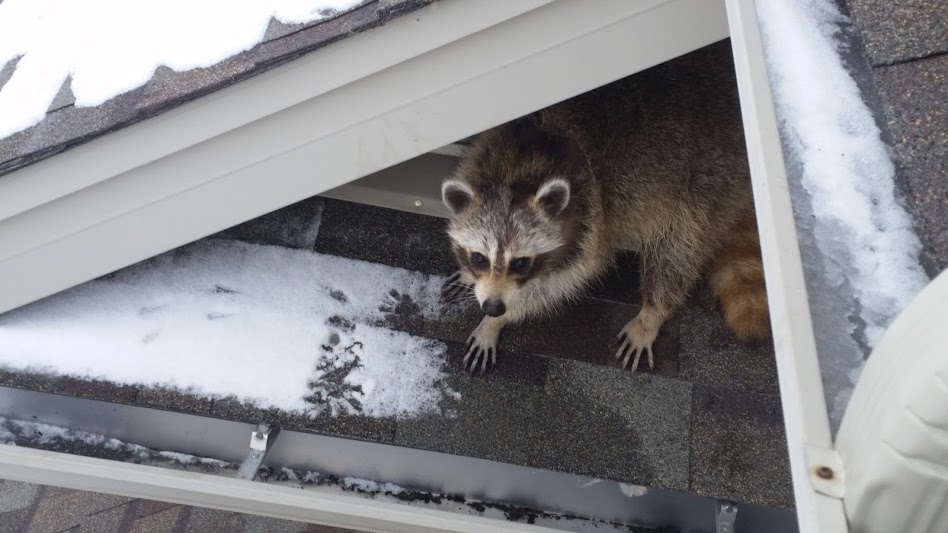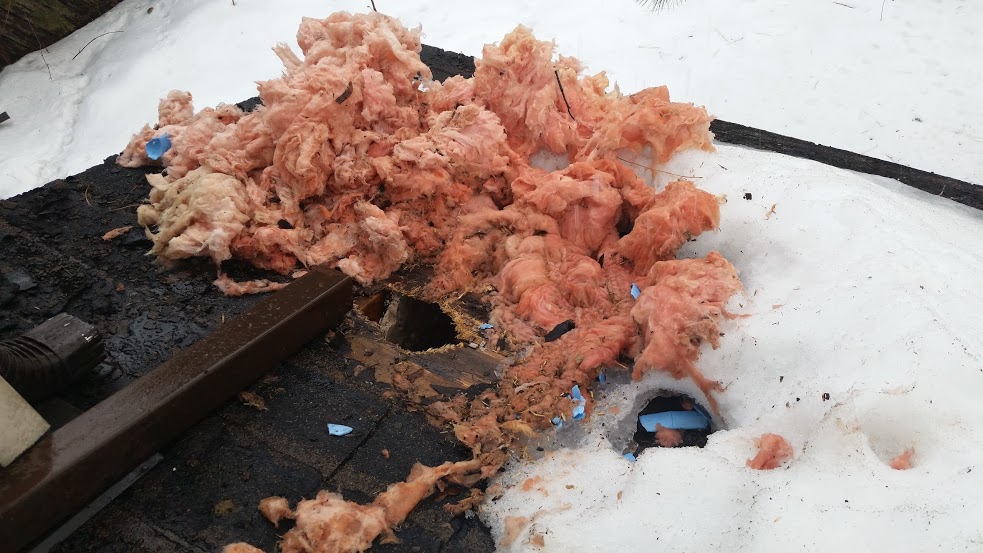Raccoons can be pesky animals that cause damage to properties. They are generally regarded as intelligent and adaptable animals, and as such, raccoon removal is something many homeowners are forced to engage in throughout the year. They are very intelligent mammals and easily recognized due to their ringed tail and black face mask.

Despite decreased activity, raccoons remain active throughout the winter
Why Are Raccoons So Pesky?
Unlike many other animals that cause damage to people’s homes, raccoons aren’t true hibernators. This means they do not sleep through winter, at least not without waking up frequently. They do spend more time in their dens during wintertime, especially during periods of extreme cold or during blizzards and snowstorms. However, during warm spells, they awake and search for food.

An active raccoon entry point through damage shingles
Raccoons are able to breed in January and February because they do not hibernate. Their young are born in litters of 2 to 6 during March, April and May. At around 6-8 weeks old, babies begin to follow their mother out of the den on short feeding forays. If raccoon mating happens in your attic without your knowledge during winter, pretty soon you’ll need to contact a professional raccoon removal service.
Why Is Removing Raccoons Professionally So Important?
Another good reason for removing raccoons from your house is they can carry rabies. Essentially, any warm-blooded mammal can get rabies, which is a serious disease. It is caused by a virus that attacks the central nervous system and raccoons are known to typically have the disease among their populations. If bitten, immediately cleanse the wound and see a doctor in order to receive post-exposure rabies treatment.
In case you haven’t encountered an animal with rabies before, be on the lookout for some of the following symptoms:
- Increased drooling
- Problems swallowing
- General sickness
- Signs of aggression in a wild animal or pet when it is not threatened
- Signs of tameness in a wild animal
- Overall changes in the normal behaviour of an animal
What’s Their Behaviour Like?
When it comes to den sites in winter, raccoons will seek out places like attics, porches and garages. Because they have short, curved claws, they can climb trees and roofs really well. They are typically nocturnal animals. They have a stocky build and are not much larger than a small dog or big cat. However, they are exceptionally strong. Their large hind legs help them stay upright and they’re about a foot high when they do so.
Keep in mind that removing raccoons from your house serves not only a practical purpose but one that concerns health, as well. Keeping yourself and your family protected from rabies is essential. Since raccoons are omnivorous, they tend to go through garbage left outside of homes in search for food. They are also known to cause damage to to roofs and attics when they decide to live there. If you spot any signs or tracks of raccoons on your property, contact Skedaddle Humane Wildlife Control and rest assured the raccoons will be removed and excluded from your home using humane methods.


